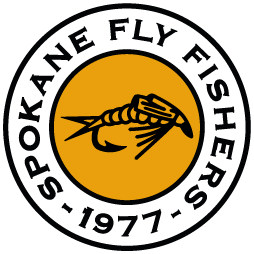We’re Bound Away… The Wide Missouri. Our nation’s longest river. Historically one of the nation’s most important waterways, it first provided a major route for Lewis and Clark. Later, those crossing it on their way to new lives in the west were moved by the moment, as is celebrated in the haunting lyrics of Shenandoah (Away, we’re bound away, across the wide, Missouri…). Riverboat travelers could ride a sternwheeler down one of the eastern rivers like the Ohio, to the Mississippi, ride that river to St. Louis, and catch the Missouri. One could then steam up through Iowa, Nebraska, the Dakotas, and far into Montana. In the aftermath of the Custer massacre, the steamer Far West nosed it’s way up to the mouth of the Little Bighorn, took on the wounded Cavalrymen who had survived the battle, and returned down the Bighorn, then the Yellowstone, and on down the Missouri to Bismarck, North Dakota, a journey of over 700 miles, where word of the massacre was spread and the wounded tended to.
So, the importance of the Missouri River is known to even a casual student of American History. But, a fly-fishing stream? Not that I’d envisioned! When I drove across it myself, while in Kansas City on business, I thought it matched the U.S. Army’s dour description of all plains rivers encountered during the Indian Wars – “A mile wide and a foot deep”. I should have known better – after all, rivers of such fly-fishing import as the Gallatin, Madison, and Yellowstone are tributaries. Then, I scanned a copy of Fly-Fishing Montana’s Missouri River and, wow! It was written by fly fishing personality and guide Trapper Badovinac, who guides on the upper Missouri and treats it as his home water. With this volume he treats it so well – this is simply the best organized, most comprehensive, and entertaining book about fishing a single river that I have ever read. Adding to the book’s allure is the author’s plain, straightforward delivery with a unique blend of humor and wit – call it backwoods slick. (After all, his name is Trapper…)
The book covers the Missouri’s blue-ribbon water, from Holter Dam in the south to the town of Cascade to the north – a distance is just over 35 miles. It opens with an instructive description of fishing during each season, and drives home the point that this river fishes well year-around if one pays attention to weather and water conditions. Wonderful photography, also by Badovinac, illustrates the seasonal opportunities available in all but the highest water conditions. There is just enough “fish porn”, tastefully done, to arouse! Entire chapters are devoted to wade fishing and float fishing, with photography to encourage the pursuit of each. Both chapters are broken down by different stretches of river, such as Holter Dam to Wolf Creek Bridge, Wolf Creek Bridge to Craig, and so on. Very simply drawn, colored maps accompany this section. This photography in the chapter on float fishing also illustrates the magnificent scenery available to those who float the river.
Badovinac also offers a comprehensive guide to hatches, presentations to mimic those hatches, and a few tying recipes for those patterns. Mayflies, caddis, stoneflies, terrestrials, and midges (check the photo of the hand, covered by a mass of what appear to be about size 26 midges!) are covered in some detail, but not in such a technical way as to discourage. Nymphing is also discussed – check the illustrations regarding tying dropper flies!
Trapper is a very real stickler on catch and release and other stream-born etiquette. Entire chapters are devoted to both topics, with the typical Badovinac charm – in these discussions his country slick style really flourishes. The chapter on catch and release summarizes data from a study Taylor and White published in the North American Journal of Fisheries Management in 1992. Discussions regarding such topics as barbless versus barbed, flies versus bait, and which trout species tend toward greater mortality from hooking, are particularly fascinating. There is even a chapter on weather, clothing, and gear and another on shops, guides, lodging, and restaurants in the area.
More than a guide for the Missouri, this volume will prepare one to read hatches, rig multiple flies, wade well, handle river watercraft, and dress well enough to enjoy success on any moving trout water. If you are planning a trip to the Missouri (maybe along with a club outing), or just want to read an entertaining, instructional work by a well-spoken, experienced guide, Fly Fishing Montana’s Missouri River is for you.
